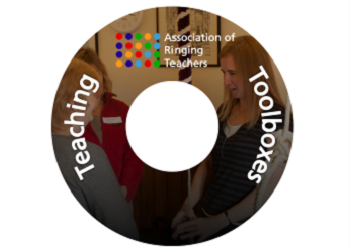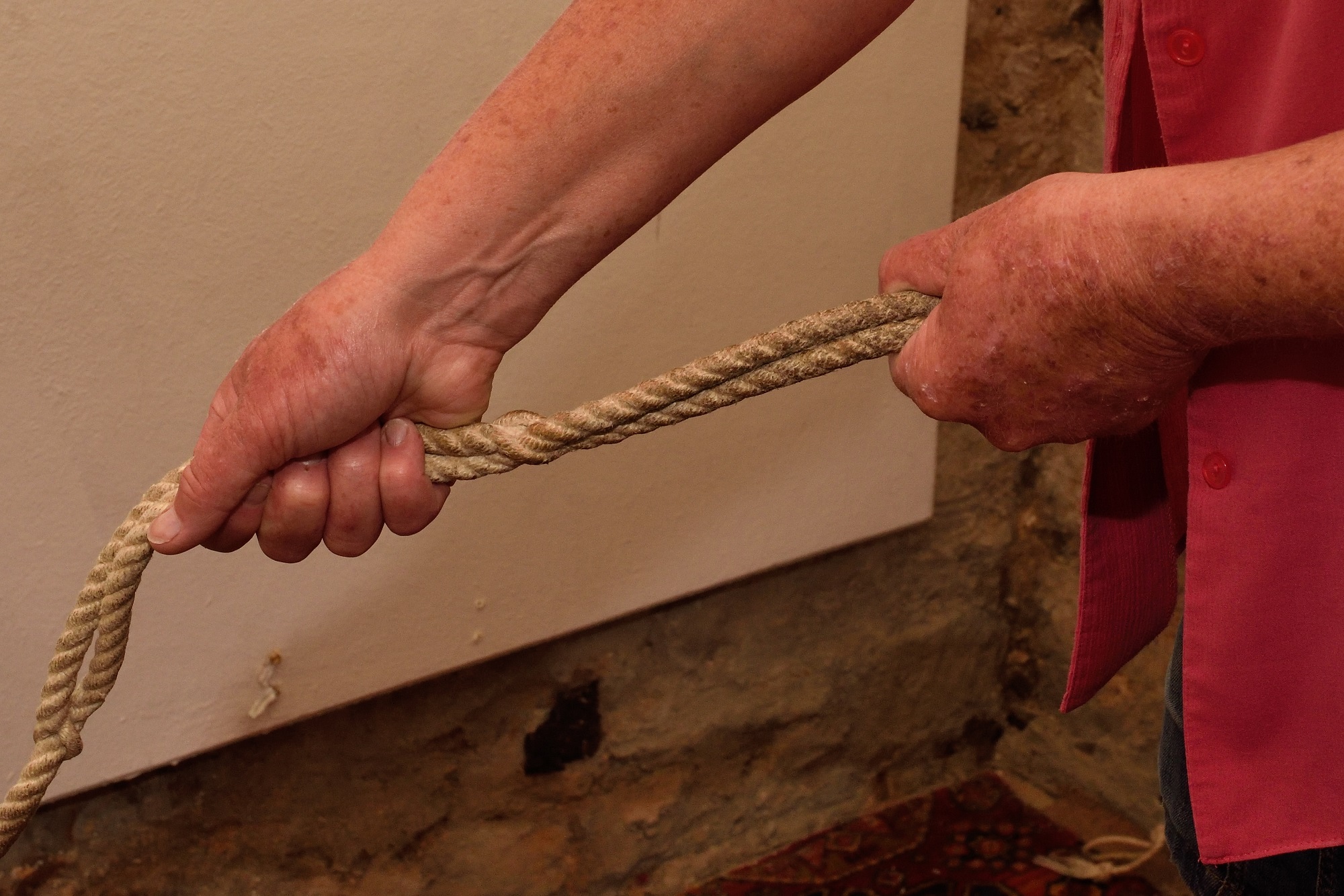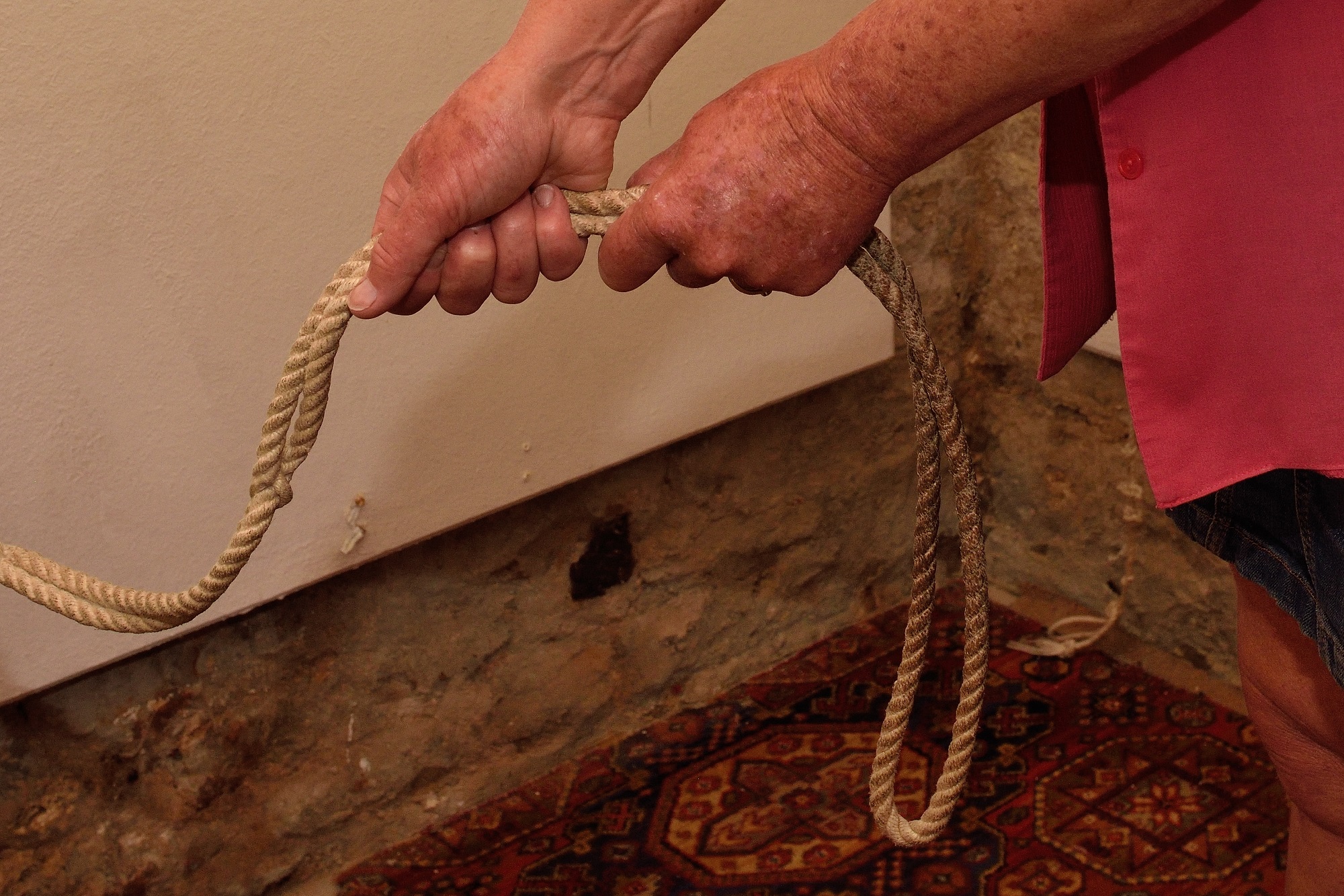Changing speed
Do your learners struggle with changing the speed of their bell, particularly at backstroke?
By the time learners move onto plain hunting they need to be comfortable enough with speed changes so that they can devote their attention to the bell’s path, not being overly distracted by the mechanics of getting the bell to ring in the desired place. Some will inevitably find it harder than others. This skill starts developing from the earliest handling exercise through to the end of Learning the Ropes Level 1 when the learner can raise, lower and set a bell. Many of the LtR Level 2 exercises contribute to the refinement of this skill and with a little imagination you can find others too.
Observation of experienced ringers shows that they do not always change their hand position on the rope when changing speed. When ringing ligher bells they achieve a quicker backstroke by bending their arms a little. Only when ringing a heavier bell do they shift up and down the tail end. The same is true of the handstroke, but here there is likely to be a small change in the position of the hands on the sally.
So, what’s going on? Efficient control of a bell relies upon the ringer having both the skills and experience to deliver the optimum amount of work on the bell, using a personally comfortable amount of physical effort. Simple physics tells us that the work applied to the bell is the force applied multiplied by the distance over which that force is applied. Ringers make changes to both force and distance as required. The experienced ringer does not need to think about doing so any more than a driver has to consider how hard/fast to turn the steering wheel. The novice does need to devote thought to the process and needs to develop a feel for both force and distance. Many start off by applying great force over a small distance, which is tiring and inefficient. Others struggle to apply enough force. We teach the skill of a long pull to maximise the work achieved by the force applied. This of course has the essential benefit of better rope control and reduces the temptation to “snatch” at the sally.
As the novice progresses on to the stage of needing to make fine adjustments in order to vary speed we must ensure they have the physical skills to control the speed change. These are the same skills as the start of ringing down and the end of ringing up. Ring a bell yourself or have someone else do it and show natural ways of achieving speed, perhaps start by ringing a bell part down and back up again. Have learners watch, discuss and then experiment on single bells, seeking to refine the basic skills they have developed to date. Encourage them to consider the effectiveness of both moving the hands up/down the tail end, altering the positioning of the hands on the sally and ringing with arms straight, moderately bent or very bent. You may find it useful to consciously ring different weight bells for a dodging exercise yourself and discover what you do on various bells.
Having said that, it is absolutely essential that novice ringers learn the skill of ringing with the maximum distance of pull possible and learn to make quick and efficient alterations to their tail end length at the correct point in the pull, i.e. before the rope starts to rise to the backstroke and not whilst their hands are up in the air. It may be that they find this easier on a middle to back bell than on a light one. Having developed this skill they will be able to deal with pulling off a bell which has a tail end that is much too long or with a bell that suddenly drops for whatever reason and they will be well set up to learn to efficiently control bigger bells. Later they will settle to their own comfortable style, using the range of pull-length that suits them and the bell they’re ringing – but they have to “walk before they can run”.
Once the learner can comfortably change speed at will on a single bell, they need to practise it at normal ringing rhythms. There are many exercises which can be used for this – here are just a few:
- Follow the leader: offer a bell to follow who will take the learner on a journey of varying speeds.
- “Hunting” through static bells, i.e. the rest of the ringers stay in rounds sequence and allow the novice to ring in 2nds, 3rds etc between them. Hunting up/down can be separated by instructing the novice to hunt to 5ths and stay there. Then on an agreed cue, starting at backstroke, they hunt down to lead. This is a good way of emphasising the three speeds of hunting without them thinking about finding bells to follow.
- Call changes, changing at backstroke as well as at handstroke.
- Dodgy call changes.
- Long and short place making (Kaleidoscope) again changing at backstroke as well as hand.
- Mexican Wave.

ART Teaching Toolboxes
If you have attended an ART Training Scheme Module 2 Day Course then the Teaching Toolboxes are available on SmART Ringer. The Teaching Toolboxes are also available from the ART shop.
Heather Peachey

